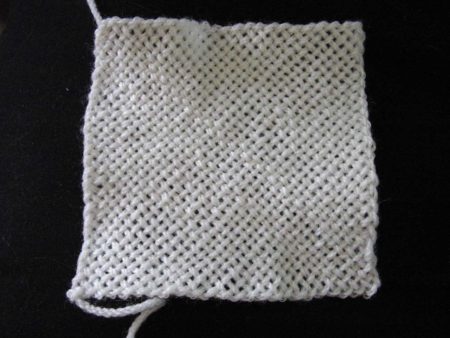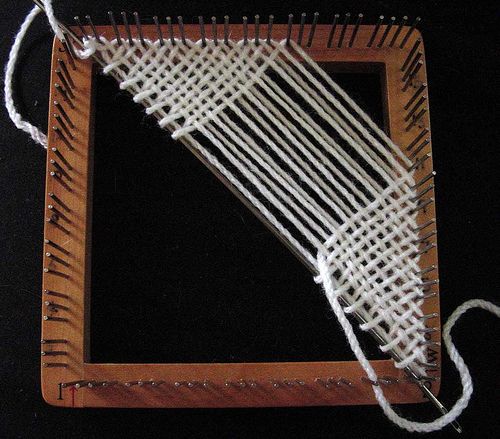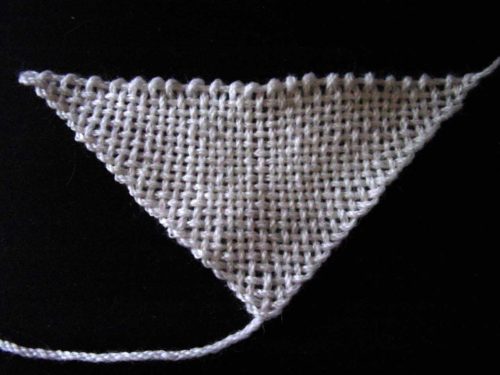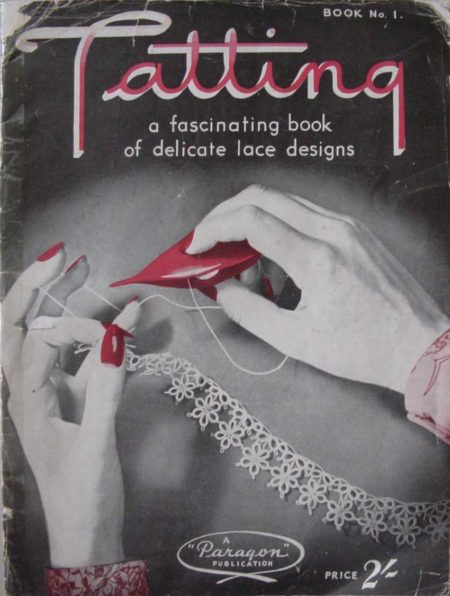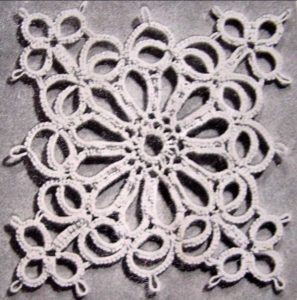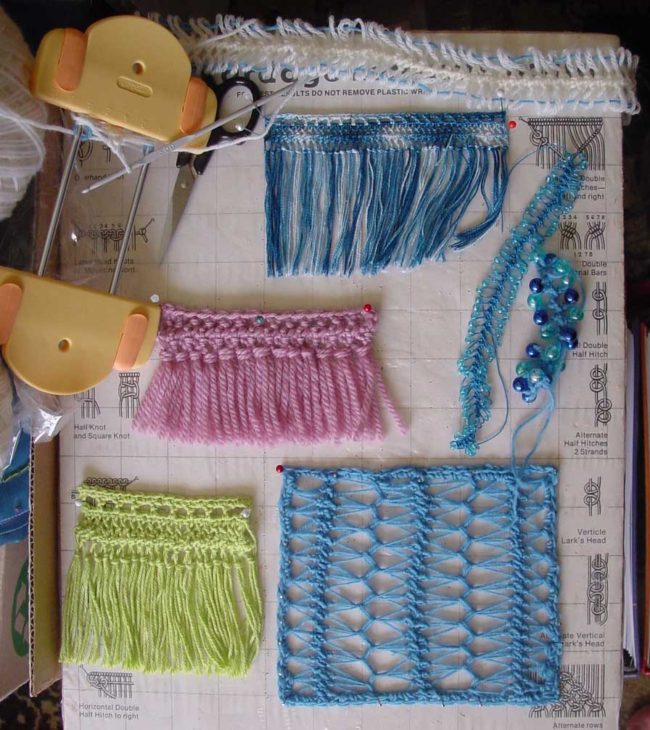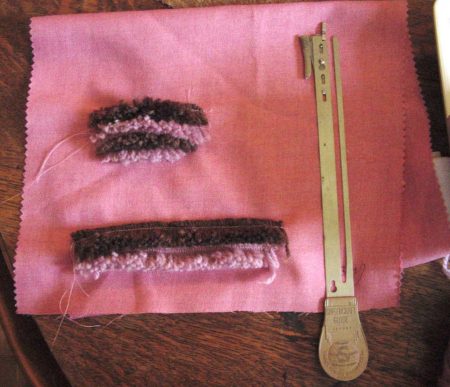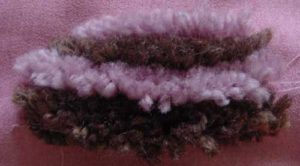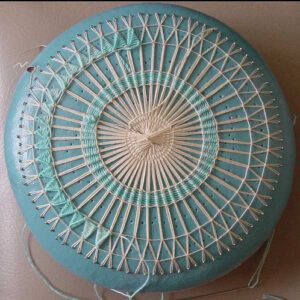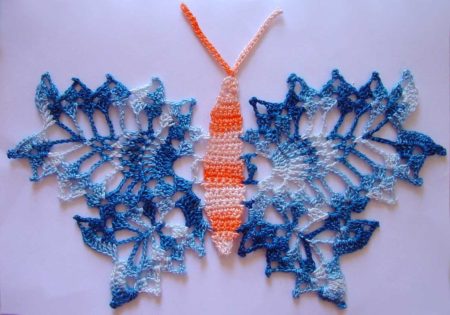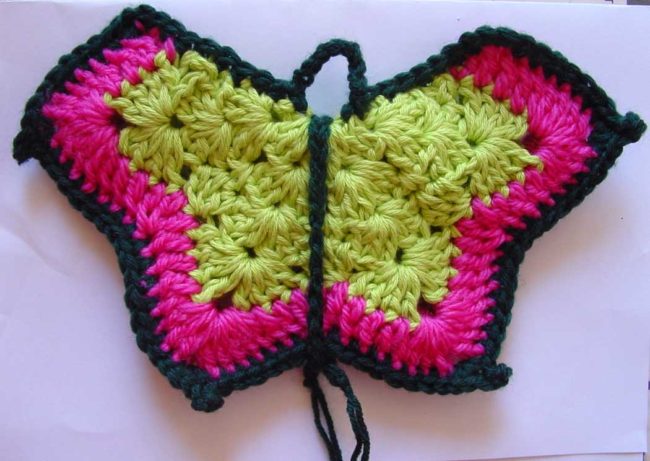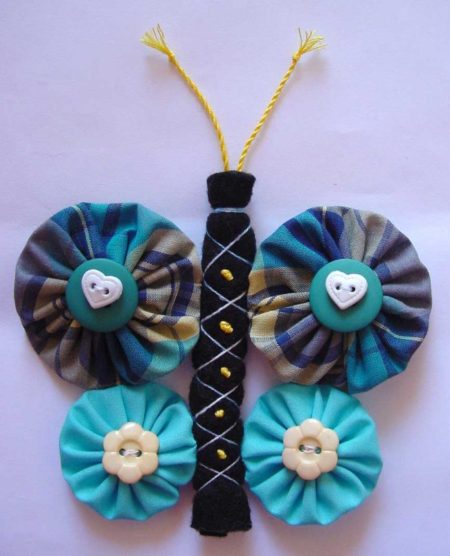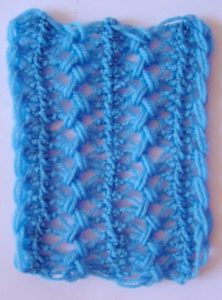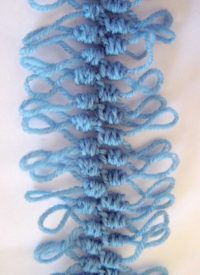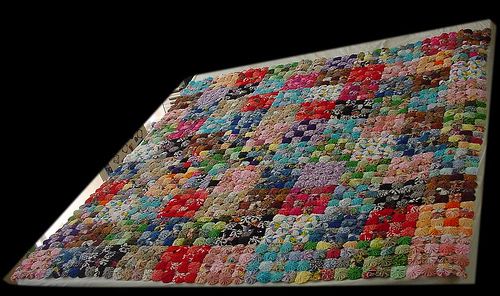Ok, technically there is neither a splat nor a crunch, bet hey! Artistic license and all that 🙂
Three or so weeks ago I promised I would upload photos of other projects I had made the next day. Then there was Christmas and New Year’s and swimming and shopping and destashing and…
Let’s just face facts, shall we? This is as fast as I get 🙂
I still don’t have a photo of one of them, but here are the rest.
I finished these wristicuffs for Miss Brittany last night.
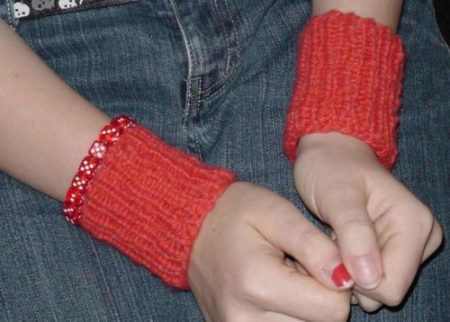
They’re made from some of my very, very early handspun. It’s lumpy and bumpy and dyed with Kool-Aid. It’s also incredibly soft and Brittany asked me to make her something out of it while we were sorting out the garage stash. I wanted to destash it but there you go…
Techy specs – Yarn: lumpy handspun 2 ply merino, approximately aran weight. Spun by me about 10 or 11 (maybe 12) years ago.
Pattern: K1, p1 rib on 4mm needles. 1 inch smaller than wrist circumference (unstretched).
3 inches long
The next projects are quite picture heavy so bear with me. Two Una-na dolls made from the Japanese book by Mimiwn. I love making these dolls. I can see myself becoming quite addicted to making them little clothes and accessories. I had to stop myself buying a little toy kitchen dresser at the op shop the other day because it was the right size for them. (If I had my own, much larger, house I would have bought it).
The black haired one is called Pansy Dollington (Brittany’s) and the brown haired one is mine. Her name is Florence Dollington. Unfortunately Florence has developed a tendency to swear like a sailor when least expected (but definitely *not* when my Dad is around, haha). I suspect she’s got a little bit of a dolly “drinky drinky” problem to tell the truth…
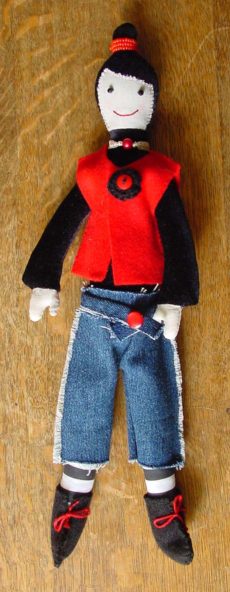
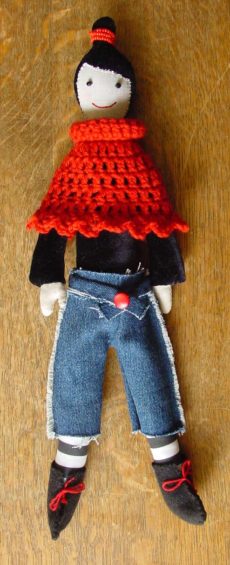
I still need to finish sewing Florence’s shirt and skirt. I had to take my sewing machine apart halfway through to clean it, and then everything got put away for Christmas and I haven’t been back to it yet.
This first picture shows her wearing the first unsuccessful wrist warmer as a shoulder warmer type thing. I’m going to put a little felt & button flower on it.
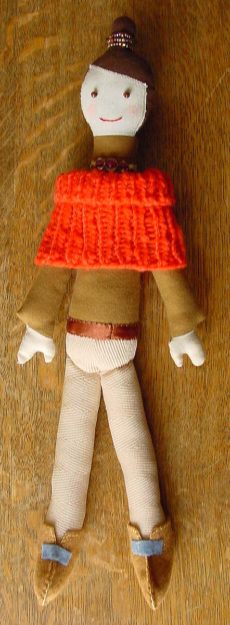
Here she is wearing an early Spring… let’s call it a “ponchette”. (I love that word. It’s so pretentious).
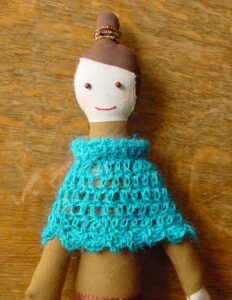
And finally here she is wearing a ponchette from the same pattern, but in thicker yarn.
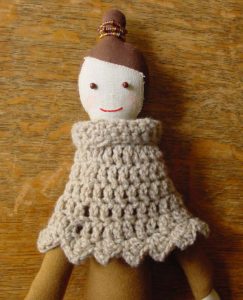
Technical details:
The book is unfortunately out of print (Una-na dolls by mimiwn)
The red and beige yarns are discontinued dk weight commercial yarns, and the bright blue is some of my hand dyed handspun yarn with (I think) mohair, angelina fibre and possibly something else thrown in. The blue is 2 ply and a bit finer than fingering weight.
Next is a quickie that I knit at the doctor’s the other day.
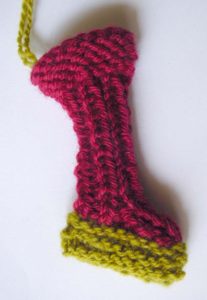
The mysterious pattern was posted on Cosymakes a few days ago. Since I had just finished all my simple knitting and I had to leave quite soon, I scribbled out the pattern, grabbed needles and yarn and had a go. I just can’t resist small vintage patterns that don’t have pictures 🙂
I love this little stocking boot so much that I’m thinking of making a bunch of them during the year in whatever scraps I still have lying around after my major destash (I’ll get to that BTW).
Techy details: I used thinner yarn and smaller needles than the pattern calls for, but only slightly. The pattern calls for 5mm needles and (I guess) a worsted weight yarn. I used 4mm needles and dk weight. The green is some of my handspun, the purpley red is Jo Sharp DK wool.
Well I think that’s enough for today! I have more projects to share with you but I think I’ll leave them and the story of the destash until tomorrow. I’ve already taken the photos, so you won’t have to wait another three weeks, I swear!

